Warmer weather is just around the corner, and signs of spring are popping up everywhere.
In Pennsylvania, spring is more noticeable in a wetland than almost any other place. Many plants, animals, and insects are beginning to wake up and get ready for another year -- and many are already on their way.
Wetlands are some of the most biodiverse places in Pennsylvania. They are home to many species of birds, mammals, amphibians, reptiles, and fish that rely on specific conditions for breeding, feeding, and nesting.
From birds returning, flowers blooming, frogs calling, and nests being built, there is a lot going on during this time of year.
Here’s a peek at what happens in some wetlands in state parks and forests when the weather starts warming up:
Black Moshannon Bog -- Black Moshannon State Park
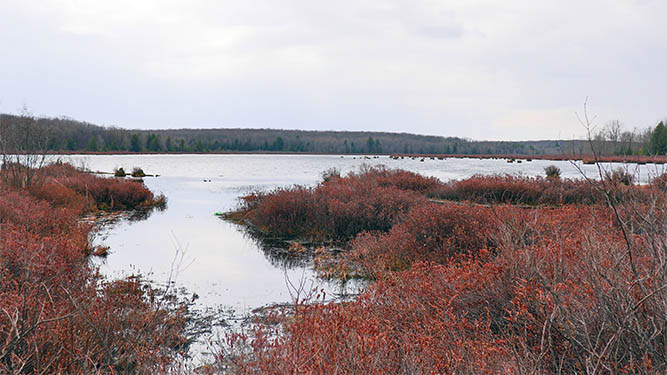
The Black Moshannon Bog Natural Area at Black Moshannon State Park is home to an abundance of wildlife in its many bogs, marshes, and swamps around Black Moshannon Lake.
Blueberries, carnivorous plants, unusual wildflowers, and colorful dragonflies are just some of the interesting things that make this place home.
The many insects that are attracted to this large wetland in turn bring a large diversity of birds to the area.
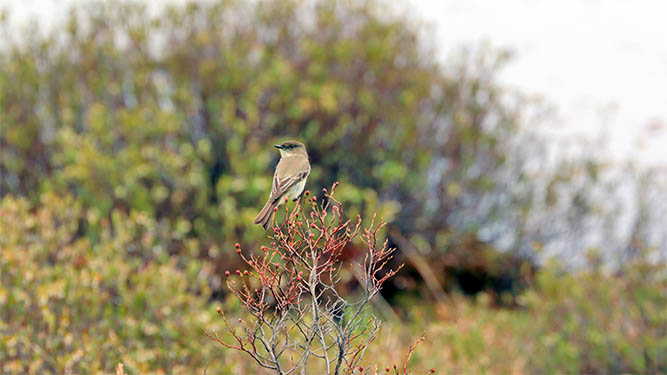
The Eastern phoebe is the hardiest of Pennsylvania’s flycatchers, arriving to their nesting grounds in March. These birds eat mainly insects, making them true harbingers of spring.
The rich, diverse ecosystem of the bog provides an excellent place for these birds to begin their nesting season.
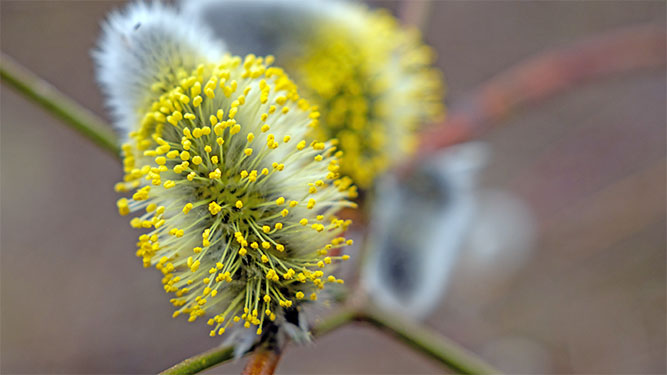
Another sign that spring has come to wetlands is the blooming of American pussy willow.
The large, soft flower buds of this plant bloom at a very important time for some insects. It is a vital food source for hungry, native pollinators like bees because it is one of the earlier blooming plants.

A quick hike on the Bog Trail or the Moss-Hanne Trail is a great way to experience this wetland.
Forest Pools -- Kings Gap Environmental Education Center
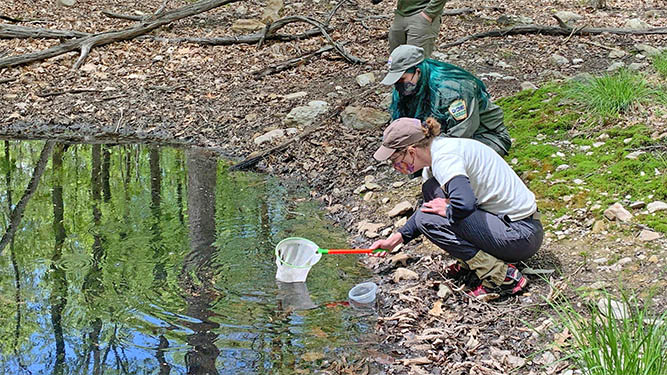
The vernal pools at the Forest Pools Preserve are filled in winter and spring usually by snow and rain, supporting several species that require these temporary wetlands.
These pools are particularly important because they give amphibians a place a to grow and breed without the threat from fish and other aquatic predators.
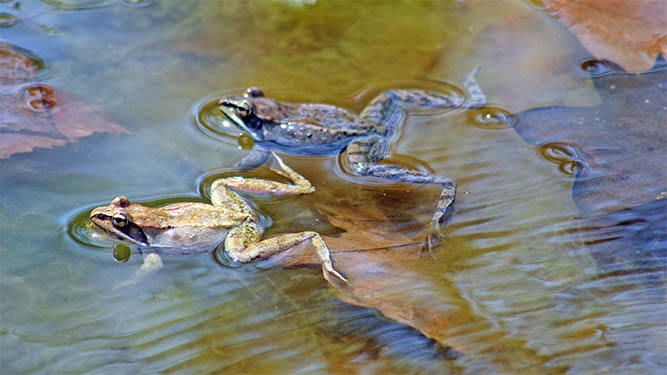
Wood frogs are active early in the season in vernal pools.
Warm rains are needed to bring the wood frog out of hibernation, and when the air temperatures begin to warm as well, the males begin a distinctive quacking call that can echo loudly through the forest.
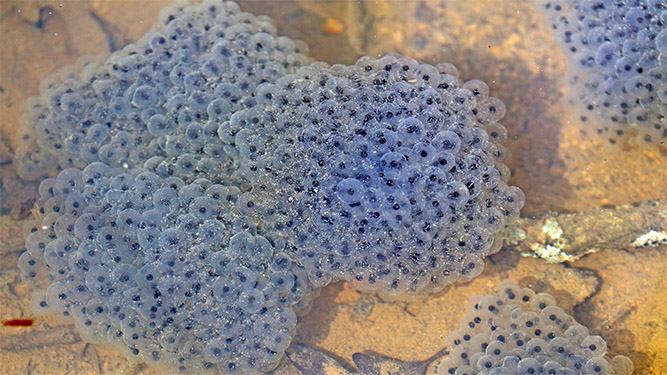
Eggs are laid in the protection of the vernal pools, and tadpoles begin hatching after less than a month.
You can look for the black and clear egg masses in shallow ponds, vernal pools, and even deep puddles, where they are laid in the thousands.
Kings Gap Environmental Education Center offers the opportunity to visit and learn about these managed ecosystems through guided programs that investigate the habitat and wildlife at the pools.
Tamarack Run Natural Area -- Loyalsock State Forest
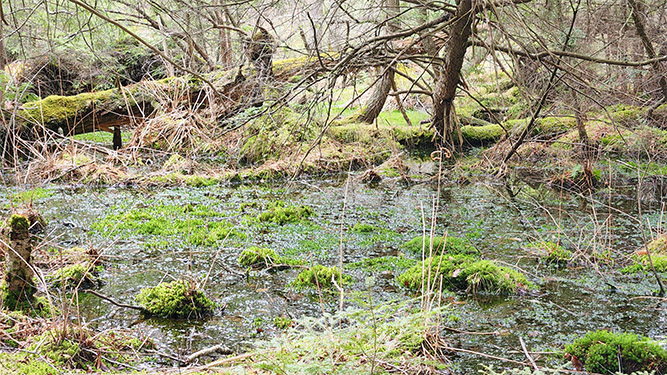
Named for the many tamarack trees growing here, Tamarack Run Natural Area in Loyalsock State Forest is a boreal conifer wetland that provides protection for many plants, amphibians, and reptiles.
Spring is an important time for the tamarack trees, which will soon begin to grow their needles for the year.
As the only native deciduous conifer in the state, these trees lose their needles in the fall and regrow them in spring.
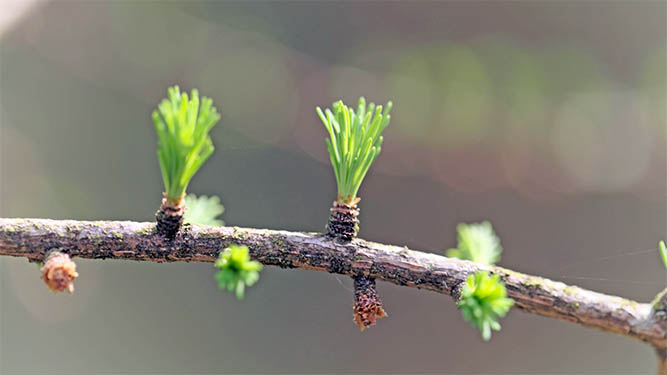
When the buds first break, the needles are a bright lime green, standing out against the forest.
Tamarack trees are a mid-succession species, often found in wetlands that have built up silt and soil and have begun to change back into forests.
By providing more unique habitats for plants, birds, and other animals, tamarack trees create a great biodiversity of species within an area.
One resident here -- who is busy this time of year -- is Pennsylvania’s smallest owl, the elusive Northern saw-whet owl.
These owls are nocturnal and rely on the shelter of the dense coniferous forest of the natural area to stay out of sight during the day.
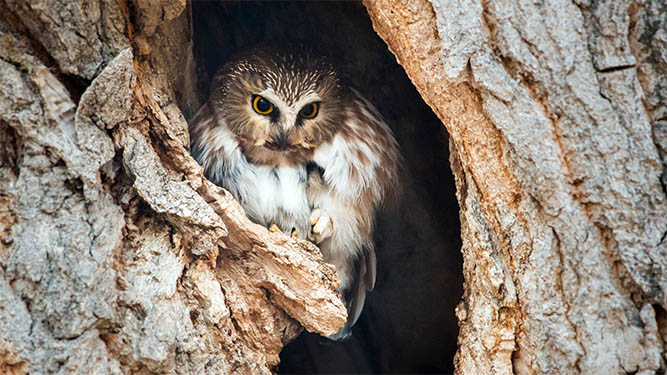
During early spring, Northern saw-whet owls begin their quest to attract a mate.
As early as January, males start sounding a “too-too-too” call up to 130 times a minute to attract a female, who will respond with a high-pitched call or a series of whistles.
The male will then fly around her about 20 times before landing and presenting a gift of food.
Saw-whet owls then choose a nesting site, preferring natural cavities such as deserted woodpecker and squirrel holes, and hollow trees or stumps.
Hikers on the Loyalsock Trail can get a glimpse of this landscape as it passes by a corner of this natural area.
Visit a Wetland and Learn More
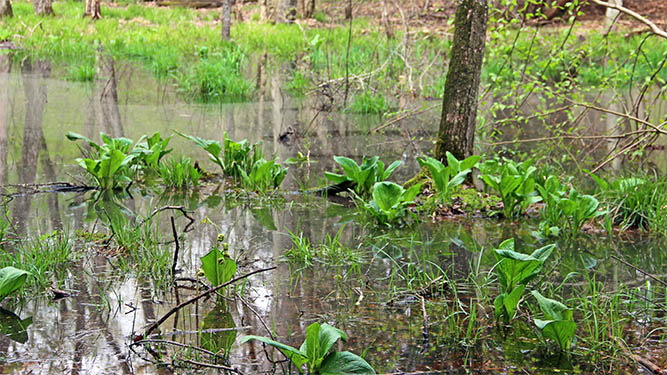
Through biodiversity conservation, DCNR works to ensure wetlands continue to thrive and support native plants and animals.
Search the DCNR Calendar of events to find opportunities to learn more about wetlands and the plants and animals that depend on them.
Visit the Pennsylvania Fish and Boat Commission website to learn more about the many amphibians and reptiles that call Pennsylvania’s wetlands home.
As you get out and about to enjoy the outdoors this spring, consider exploring a wetland to experience some of these seasonal wonders.